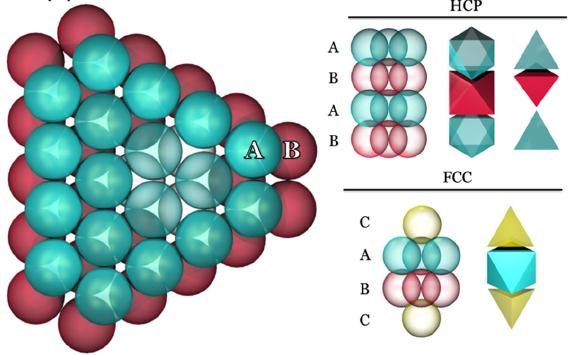 Reentrant equilibrium disordering in nanoparticle–polymer mixtures (纳米颗粒–聚合物混合体的折返平衡紊乱)
Reentrant equilibrium disordering in nanoparticle–polymer mixtures (纳米颗粒–聚合物混合体的折返平衡紊乱)
Dong Meng, Sanat K. Kumar, Gary S. Grest, Nathan A. Mahynski & Athanassios Z. Panagiotopoulos
npj Computational Materials 3, Article number: 3 (2017)
doi:10.1038/s41524-016-0005-8
Published online:31 January 2017
Abstract| Full Text | PDF OPEN
摘要:大量实验研究表明,无热胶体/聚合物混合体可随着聚合物浓度的增大而经历一系列相变,从无序流体到胶态晶体再到第二个无序状态,这种相变是通过聚合物调节颗粒间吸引力而驱动的,与聚合物的密度和尺寸有关。人们推测,高密度聚合物引起的无序状态是粒子间相互强烈吸引的结果,抑制了胶状晶体形成的动力学过程,形成非平衡凝胶相,从而干扰了晶化。本研究采用分子动力学模拟和密度泛函理论计算聚合物和纳米粒子(NPS)的可比尺寸,以揭示分子链足够长的聚合物在高密度状态下,晶体无序相共存所对应的平衡热力学相变。尽管中等密度的聚合物所诱导的胶体间相互吸引,的确可以稳定晶体,但在高密度时,聚合物被迫占据了晶体的所有空隙,使聚合物长链失去了显著的构象熵,致使晶体不再稳定。本研究得出的定量结果与现有的实验数据相一致,这表明至少在胶体纳米粒子尺寸足够小的范围内,晶相只有中等程度的热力学稳定性。
Abstract: A large body of experimental work has established that athermal colloid/polymer mixtures undergo a sequence of transitions from a disordered fluid state to a colloidal crystal to a second disordered phase with increasing polymer concentration. These transitions are driven by polymer-mediated interparticle attraction, which is a function of both the polymer density and size. It has been posited that the disordered state at high polymer density is a consequence of strong interparticle attractions that kinetically inhibit the formation of the colloidal crystal, i.e., the formation of a non-equilibrium gel phase interferes with crystallization. Here we use molecular dynamics simulations and density functional theory on polymers and nanoparticles (NPs) of comparable size and show that the crystal-disordered phase coexistence at high polymer density for sufficiently long chains corresponds to an equilibrium thermodynamic phase transition. While the crystal is, indeed, stabilized at intermediate polymer density by polymer-induced intercolloid attractions, it is destabilized at higher densities because long chains lose significant configurational entropy when they are forced to occupy all of the crystal voids. Our results are in quantitative agreement with existing experimental data and show that, at least in the nanoparticle limit of sufficiently small colloidal particles, the crystal phase only has a modest range of thermodynamic stability.
Editorial Summary
Colloids: Polymers hold it together, for a while(胶体:聚合物拉住纳米颗粒,就那么一会儿)
聚合物需要恰当的长度才能把纳米颗粒纳入一个晶体的结构中。来自美国哥伦比亚大学的科学家Sanat Kumar及其同事解释了小颗粒悬浮在溶液中形成胶体后,当加入聚合物时为什么胶体先变得有序接着又变为无序。胶体中的粒子通常可以自由移动,但聚合物的加入使它们形成晶体状结构。添加更多的聚合物使胶体又返回到无序状态。Kumar等采用分子动力学模拟和密度泛函理论计算表明,尽管聚合物在中等密度时通过诱导纳米颗粒相互吸引而稳定晶体,但在高密度时,因聚合物分子链较长,不适合占据纳米颗粒之间的空隙,导致晶体不稳定而变得无序。
Polymers need to be the right length if they are to hold NPs into a crystal structure, shows research from scientists in the USA. Sanat Kumar from Columbia University and colleagues explain why small particles suspended in a solution, known as a colloid, become ordered then disordered when a polymer is added. The particles in a colloid are usually free to move around, but the addition of a polymer causes them to form a crystal-like structure. Adding more polymer returns the colloid to a disordered state. Kumar et al.use molecular dynamic simulations and density functional theory to show that this occurs because, while the crystal is stabilized at intermediate polymer density by polymer-induced nanoparticle attraction, it is destabilized at higher densities when the longer polymer chains can’t fit in the gaps between the particles.


 沪公网安备 31010502006565号
沪公网安备 31010502006565号